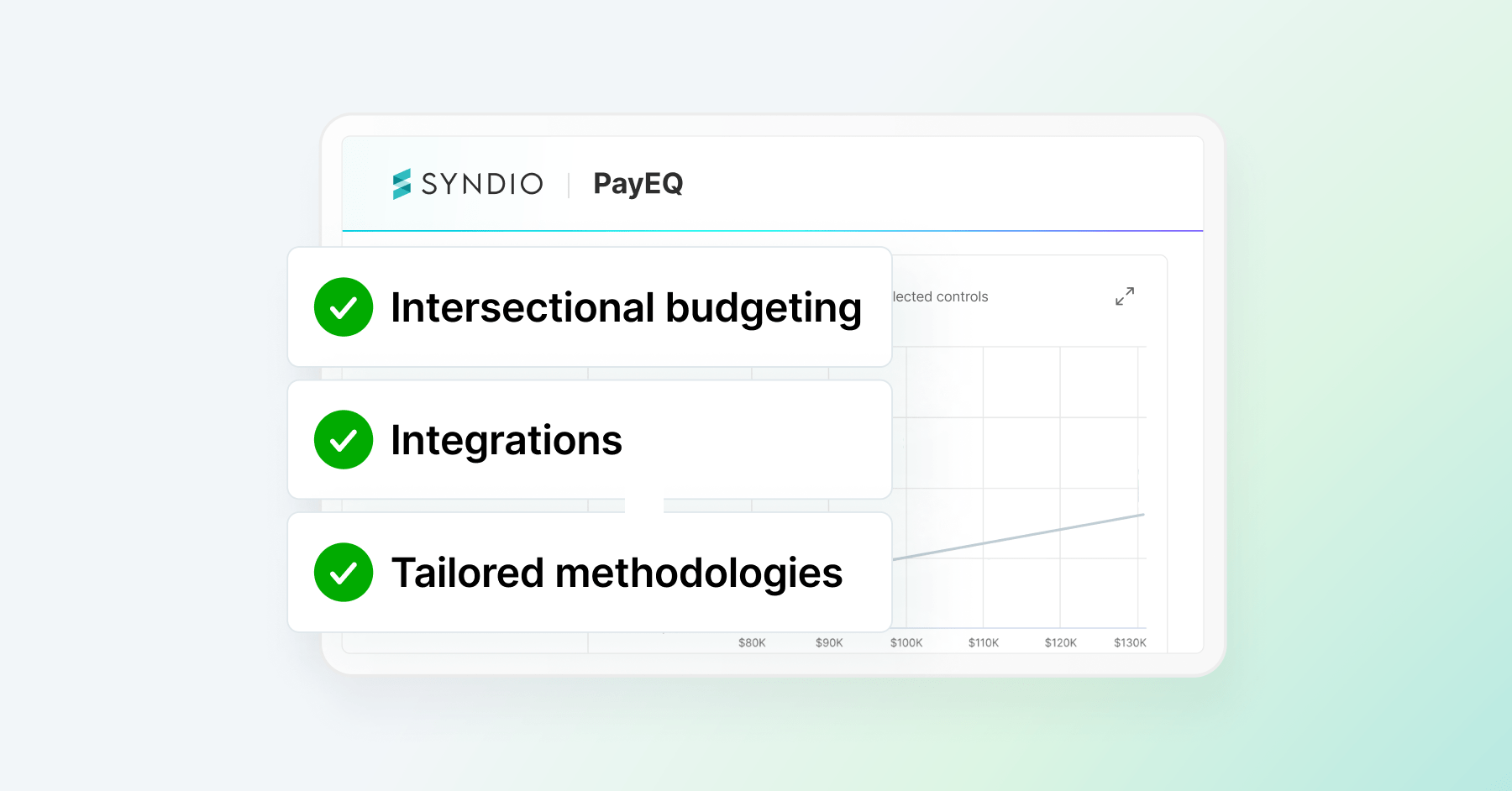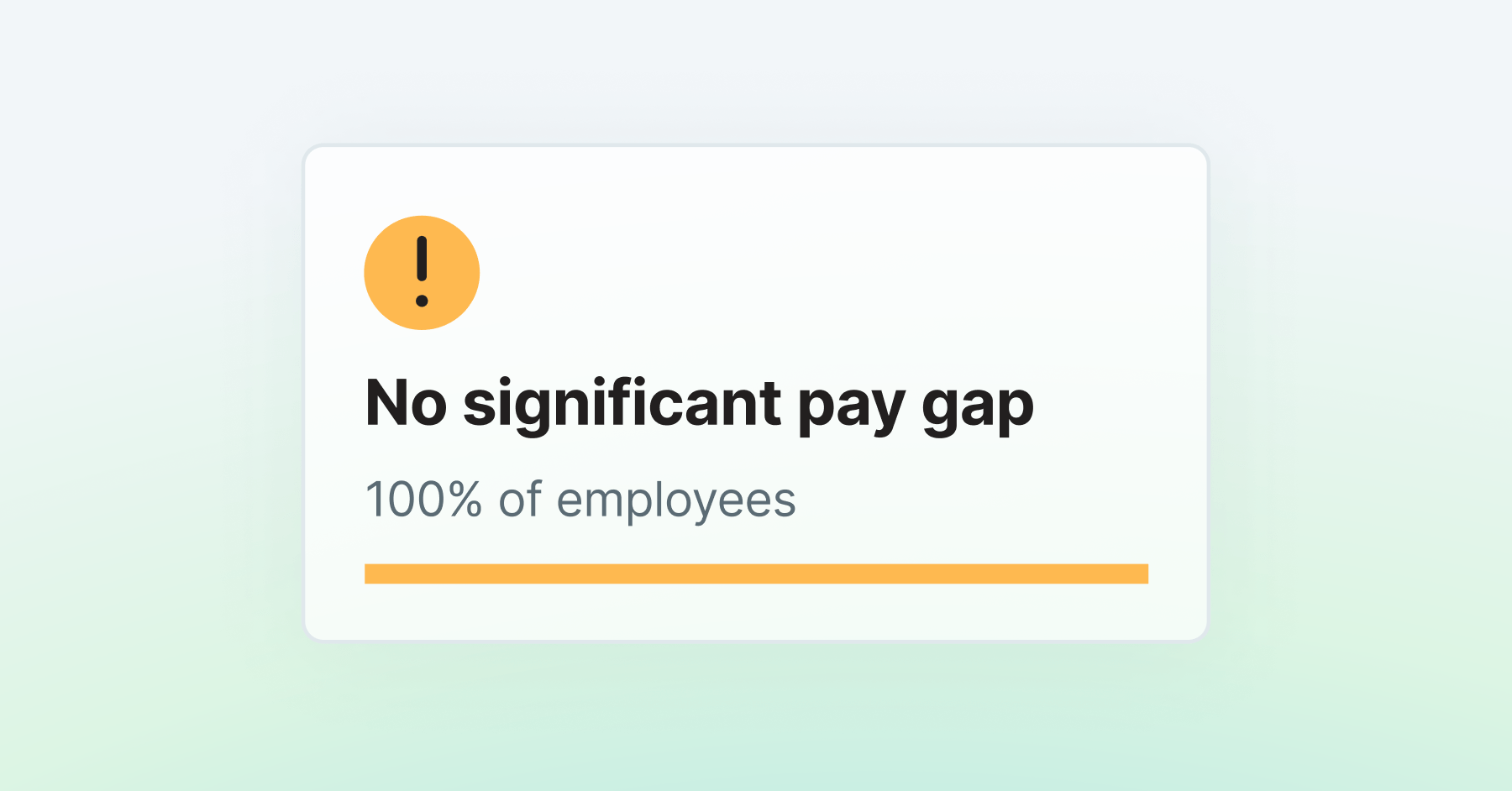Creating and maintaining an equitable workplace requires more than just good intentions — it requires consistent effort and monitoring. Tracking and analyzing the right workplace equity metrics can help companies ensure they’re hiring, compensating, supporting, and advancing employees based on what they have to offer, not their gender, race, or other factors of identity. Workplace equity analysis metrics can also provide a foundation for more clearly quantifying the ‘S’ in ESG (environmental, social, and governance) factors, currently a rather “squishy”, broadly-defined consideration for organizations.
Below are eight types of workplace equity analysis that can help companies measure progress at every stage of the employee cycle.
1. Representation analysis
Representation analysis involves identifying employee demographic trends by job type, level, or department, such as analyzing the ratio of men to women in engineering roles or the ratio of white workers to BIPOC workers in executive roles. Inequitable representation, especially in management and high-paying roles, can be a major contributor to companies’ median pay gaps.
Representation analysis is key to understanding what your workforce looks like today so that you have a starting point for measuring progress towards diversity goals.
2. Diversity benchmarking
Diversity benchmarking involves comparing internal demographic data to external sources such as U.S. Census or EEO-1 data. This analysis helps organizations understand if their current workforce reflects the demographics of the communities they work in and the target audience they serve.
By benchmarking your employee population against both internal talent availability and external labor pool data, you can identify gaps for where you stand compared to what’s achievable for your industry and labor pool. Once you determine what your workforce should look like, you will be able to set realistic, data-backed representation targets for departments and levels.
3. Recruitment/hiring analysis
Recruitment/hiring analysis involves tracking applicant demographics through the recruitment funnel to calculate the likelihood of a demographic group to move from applicant to offer compared to other groups. This analysis helps organizations understand if their recruitment and hiring practices are attracting a diverse pool of candidates and moving candidates through the pipeline equitably.
A recruitment/hiring analysis can help you determine at which point of the hiring process candidates of certain demographics may be dropping out at inequitable rates so that you can flag problem areas. Are you not pulling from a broad enough applicant pool and diverse candidate sources? Do job descriptions have biased language? Does your interview process potentially introduce bias? Do certain communities only make it to the manager screening and never move to the full interview? Are they interviewed but never offered the position? These are all potential barriers to entry for job candidates and must be addressed to ensure a fair hiring process.
4. Performance rating analysis
A performance rating analysis involves identifying differences in performance ratings by employee identity group to identify whether each group is more or less likely to be rated at the average company-wide performance score. This analysis helps organizations understand if certain groups of employees are being unfairly rated or undervalued due to inequitable performance rating processes so that they can address discrepancies.
Research from Joan C. Williams with the Center for Worklife Law identified multiple ways that bias can creep into performance ratings. Groups such as women or people of color face higher scrutiny over mistakes and are more likely to have personality traits mentioned in evaluations, while white men are more likely to be judged on potential. The same article also identifies the “halo-horns” effect that artificially advantages white men in global ratings “because they get halos (where one strength is generalized into an overall high rating) whereas other groups get horns (where one mistake is generalized into an overall low rating).” Review processes that have the potential for bias include open-ended review prompts, ratings that aren’t tied to job competencies, lack of requiring evidence for ratings, and lack of manager training on bias.
Because performance data is commonly used to drive decisions for promotions, raises, and even layoffs or firing, identifying bias here can address issues before they bleed into other parts of the employee lifecycle.
5. Promotions analysis
Promotions analysis tests whether any identity group is more or less likely to be promoted than the average promotion rate for the company. This analysis helps organizations understand if certain groups of employees are being unfairly passed over for promotions or not given equal opportunities for advancement.
In the general population, women and people of color are less likely to be promoted: McKinsey/LeanIn research showed women are 13% less likely than white men to be promoted. The difference is even larger for women of color at 18%. Inequitable promotion rates are a major contributor to pay gaps because they create a “broken rung” that holds women and people of color back from the higher-level positions that come with higher pay.
By using analytics to understand if they have inequitable promotion rates, companies can then dig into possible root causes such as unfair performance rating practices or unequal access to projects and opportunities — then come up with ways to mitigate them.
6. Engagement analysis
Engagement analysis involves identifying differences in employee engagement or satisfaction rates by employee identity group. At the most basic level, this includes calculating whether any group is more or less likely to give the company the average engagement and/or satisfaction score. This analysis helps organizations understand if certain groups of employees are disengaged or not feeling supported in the workplace, which can stem from a lack of inclusion and belonging.
Engagement analysis can take multiple forms. Engagement surveys can get specific to issues of diversity, inclusion and belonging, rather than simply analyzing top-level engagement outcomes by communities. Organizational network analysis can identify connections between employees, providing a different look at how communities are (or are not) integrated into the organization.
7. Attrition analysis
Attrition analysis involves identifying differences in attrition rates by employee identity group, such as calculating whether each group is more or less likely to leave than the company’s average attrition rate. This analysis helps organizations understand if certain groups of employees are leaving the organization at higher rates and identify potential reasons for this disparity.
Inequitable attrition rates are a contributor to the pay gap because they create a “leaky bucket” in which women and people of color leave at disproportionately higher rates. McKinsey’s 2022 Women in the Workplace report found that for every woman director promoted, two women directors choose to leave.
Companies that uncover inequitable attrition rates can then work to identify root causes, such as lack of inclusion and belonging or inequitable career opportunities. Bain & Company found that “Black employees who feel excluded at work are two to four times more likely to leave their jobs than Black (or white) employees who feel fully included at work” and a 2021 McKinsey report found that lack of advancement opportunities was a key barrier to retaining Black employees.
8. Pay equity analysis
A pay equity analysis involves identifying compensation patterns based on employee identity. This analysis helps organizations ensure that employees are being compensated fairly and equitably for similar work, regardless of their identity.
The key steps for a pay equity analysis include grouping employees performing similar work, controlling for legitimate job-related factors that explain differences in pay, testing for identity-based differences in pay after accounting for those controls, and then remediating any remaining gaps with targeted pay adjustments.
A comprehensive pay equity analysis includes analyses for both race/ethnicity and gender, and the intersections of each. Modern pay equity programs adopt an equitable pay management approach that is ongoing, preventive, and embedded into every pay decision, rather than a retroactive, annual pay audit.
Supporting equity throughout the employee lifecycle
All of these workplace equity factors are intertwined. They combine and compound to contribute to companies’ pay and representation gaps. For example, let’s say a company has inequitable performance rating practices in which women end up being rated for performance while men are rated for potential. Men are in turn promoted at higher rates than women, and these inequitable career opportunities not only hold women back from moving into higher positions, but also cause women to leave the company at higher rates. This will result in fewer women in top (and, importantly, top-paying) positions over time — and it will be no surprise that this company will experience a gender pay gap.
Companies looking to build a mature workplace equity program should perform all of the above types of workplace equity analysis, at least occasionally. Not only will companies be better able to quantify social impact for use cases such as ESG reporting, but by adding muscle and rigor to tracking, measuring, and analyzing these metrics, they can get specific about where they are failing to treat their employees equitably. Organizations can then focus on where issues are most acute to effectively drive progress.
Want to learn where leading companies are prioritizing their workplace equity efforts this year? Get our latest Workplace Equity Trends Report at the link below. If you’d like to see how Syndio’s Workplace Equity Analytics Platform can help turn your pay equity and diversity goals into reality, request a demo with our team.



